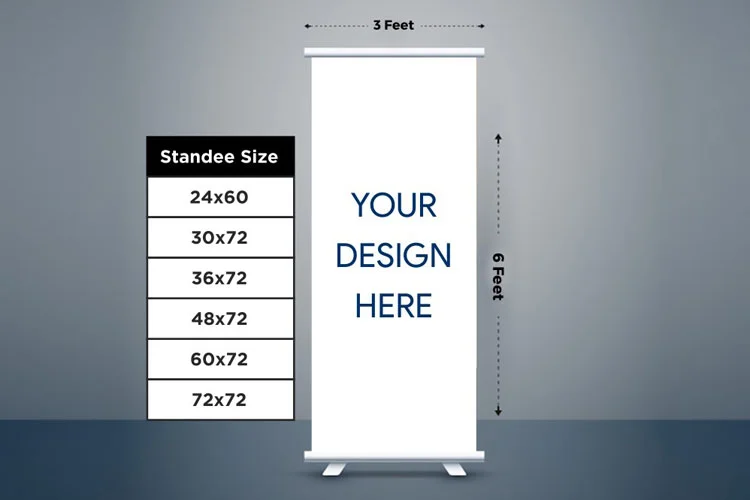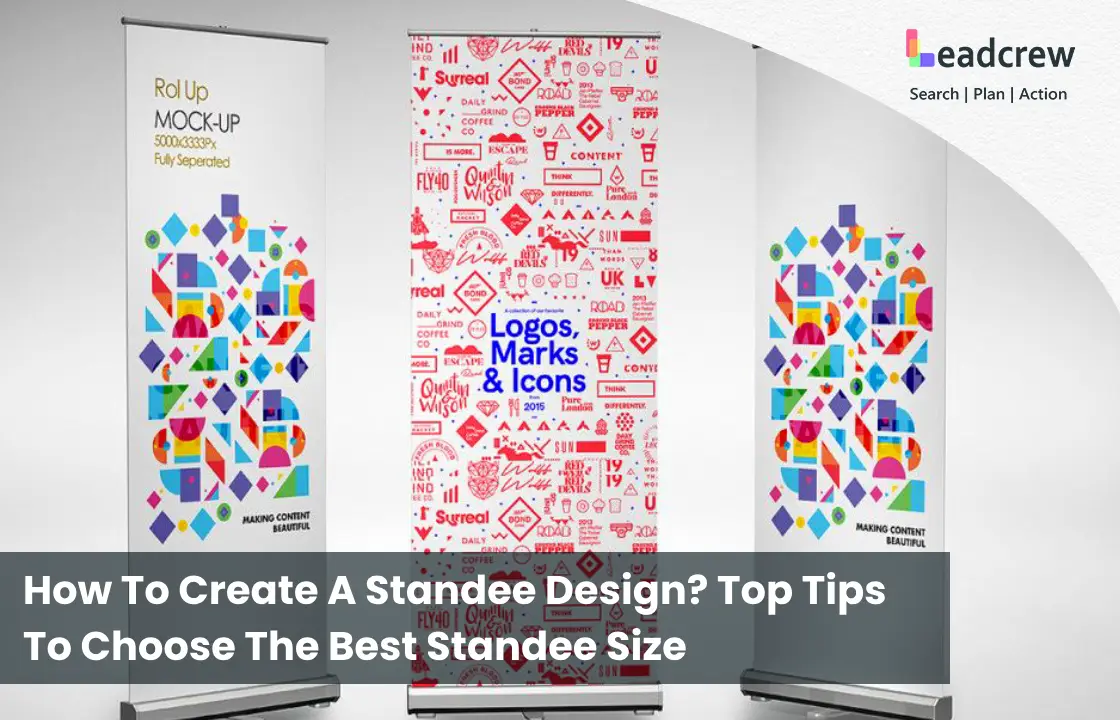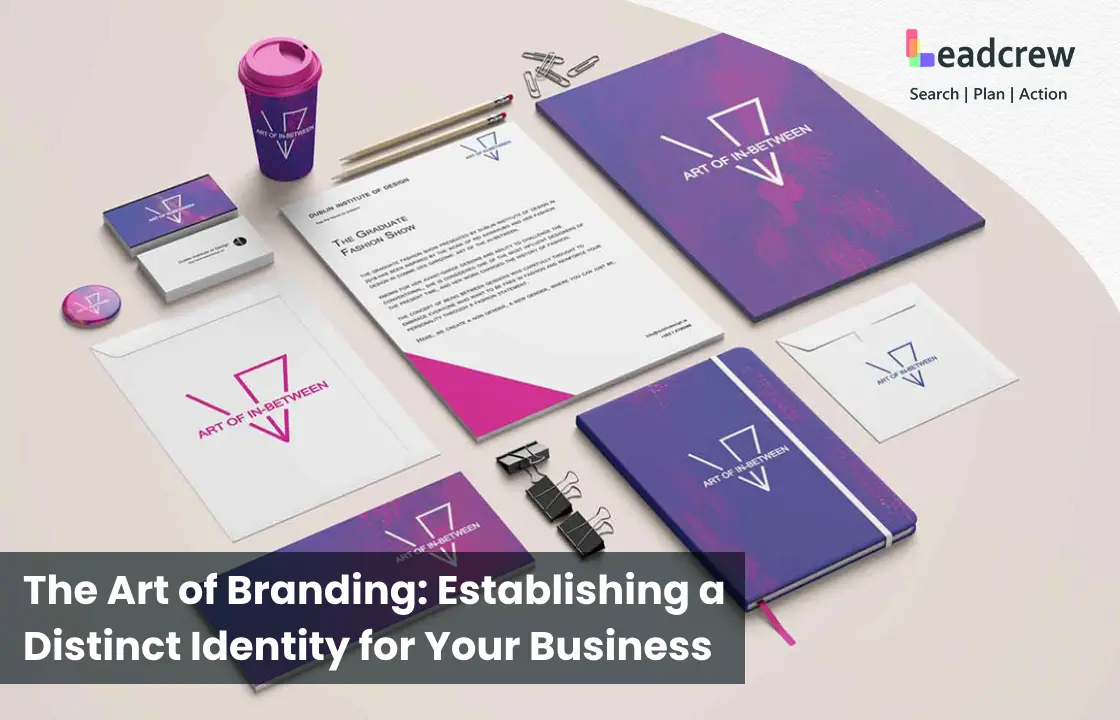Table of contents:
- Introduction: What Is A Standee?
- Who Benefits From Standee Designs?
- Step-By-Step Guide: How To Create A Standee Design?
- How To Choose The Best Standee Size For Different Events?
- Common Standee Sizes And Their Applications
- Common Mistakes To Avoid When Designing A Standee
- Create The Perfect Standee For Your Brand With Leadcrew
- Frequently Asked Questions (FAQs)
Introduction: What Is A Standee?
There’s a reason standees have been a staple in marketing campaigns for years. Their versatility and ability to instantly grab attention make them a favorite tool for both small and large businesses. But why are they so effective? Whether you’re a startup trying to make a mark or an established brand looking to reinforce your message, standees provide an impactful, budget-friendly solution.

1. Instant Visibility:
2. Highly Customizable:
3. Portable and Lightweight:
4. Cost-Effective Branding:
5. Durability:
Who Benefits From Standee Designs?
1. Retail Stores:
2. Event Organizers:
3. Exhibitors and Trade Show Participants:
In a crowded exhibition hall, you need something that stands out. Standees help businesses attract booth visitors, showcase services, and reinforce their brand, all in one portable display.
4. Cinemas and Entertainment Venues:
5. Startups and Small Businesses:
6. Educational Institutions:
7. Hospitality and Tourism:
Step-By-Step Guide: How To Create A Standee Design?
Step 1: Define The Purpose
Step 2: Choose The Right Standee Size
Step 3: Plan The Layout
- Top section: Feature your brand logo or campaign headline.
- Middle section: Use this space for engaging visuals or the core message.
- Bottom section: Add CTAs like websites, QR codes, or contact details.
- Leave enough breathing space between elements, use alignment grids, and ensure there’s a clear visual hierarchy.
Step 4: Choose The Right Colors And Fonts
For the perfect standee design, ensure your color and font choice align with your brand identity while ensuring visibility and readability. For instance, a bright yellow background may be great for a kids’ product, but inappropriate for a luxury brand.
- Use bold, sans-serif fonts for headlines.
- Stick to your brand’s primary and secondary color palettes.
- Ensure you’re using perfect contrast between the background and text.
- Avoid overly ornate or cursive fonts that are hard to read from a distance.
Step 5: Incorporate Branding Elements
Here’s what to include:
- High-resolution logo placed in the top or bottom corner to reinforce brand identity without disrupting the layout. Always use vector or high-res image files to avoid pixelation.
- Your tagline or motto is displayed near the header or main image to convey the company's mission in a memorable tone.
- Brand color backgrounds or accents that align with your style guide. Stick to 2–3 core colors to keep the design clean and on-brand.
- Website, contact details, or social media links added to the lower section of the standee. Make sure they’re legible and easy to scan at a glance, bonus points for adding a QR code for quick interaction.
Step 6: Use High-Resolution Images
Step 7: Mock It Up
Mock-ups also make it easier to get client or stakeholder approval and prevent costly reprints.
Step 8: Print and Test
Once you’re satisfied with your design, send it to a trusted printer. Ensure you provide files in the required format, usually high-resolution PDFs or TIFFs with proper bleed and crop marks.
Ask for a test print or a sample if budget allows. This gives you a chance to assess color accuracy, material quality, and finishing options before mass production. You can get an ideal standee if you partner with the right marketing agency like Leadcrew!
How To Choose The Best Standee Size For Different Events?

Trade Shows and Exhibitions:
Retail Stores and Promotions
Corporate Events and Seminars:
Recommended standee size: 36 x 72 inches.
Outdoor Campaigns:
Common Standee Sizes and Their Applications
It’s always advisable to design your standee using the correct standee size in pixels to ensure sharp, high-quality prints without distortion or blurriness. Below is a brief look at common standee size inches and their ideal use cases.

Common Mistakes To Avoid When Designing A Standee
1. Wrong Size Selection:
2. Overuse of Text:
3. Poor Resolution and Image Quality:
4. Weak or Vague Calls to Action:
A beautiful standee with no clear next step is a missed opportunity. Viewers need direction, whether that’s visiting your website, scanning a QR code, or heading to a specific location. Don’t be vague; use strong, direct calls to action that tell people exactly what you want them to do, and make sure it’s easy to find and read.





